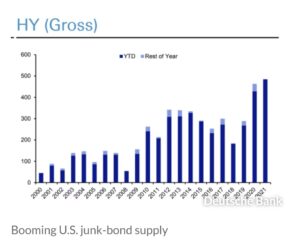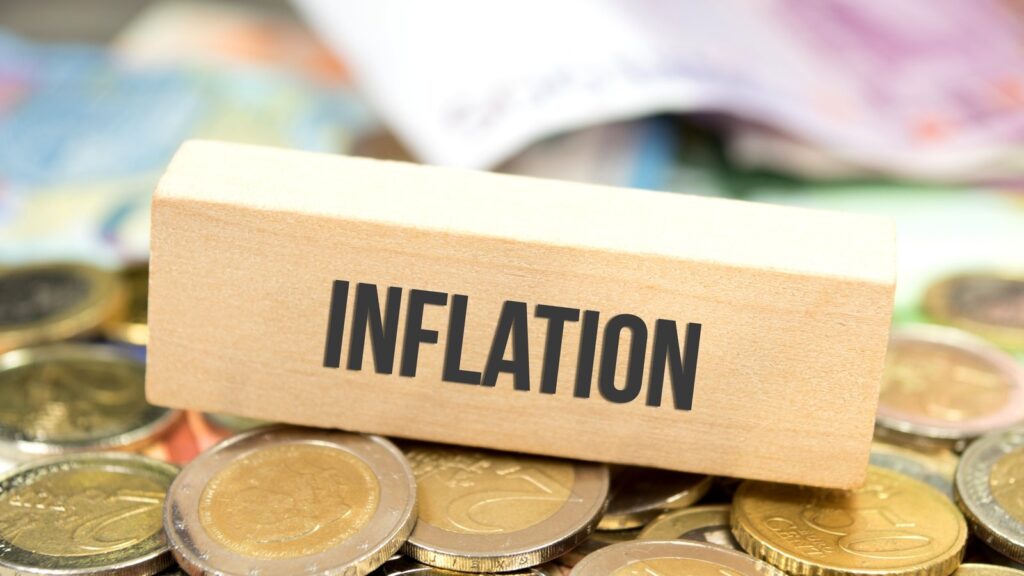Newsroom
Fed, ECB’s QE-driven inflation – who blinks first?
Enormous, unsustainable QE continues unabated which means that Federal Reserve, European Central Bank, Bank of Japan continue to expand M2 monetary supply on an (unfunded) basis post-GFC and post-COVID. RRP reverse repos data tells the chilling tale of central banks continuing to expand monetary supply, leading to massive inflationary trouble down the line. The key to post-COVID economic recovery was always built on productivity, yet this does not seem to be the focus of governments and central banks who seem more intent to print money on an unfunded basis without much regard to the underlying dangers of risking unbacked currency collapse. Since the collapse of the Bretton Woods system of backing currencies with gold, fiat currencies have been operating essentially on an unbacked basis. Some argument can be made for a currency being somewhat representative of the strength of its overall economy – but this is not relevant to the core intrinsic backing of any one currency. Whatever remedial policy action by central banks that may be taken down the line is highly likely to be too little, too late.
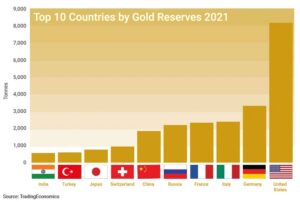
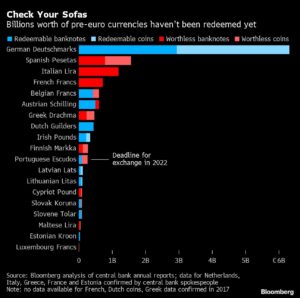
It is clearly ill-advised for central banks to swell the monetary supply on an unfunded basis, which can end up creating a very false impression of performance and deficit status. The two major world currencies, the US Dollar and the Euro, are highly vulnerable under such prevailing circumstances – entirely driven by the Federal Bank and European Central Bank’s persistent unwillingness in recent times to curb excessive post-GFC printing of money, or quantitative easing (QE). Any tapering of QE will, by necessity, need to be followed by a rise in interest rates in an effort to stave off inflation created by the unfunded expansion of monetary supply. Incredibly, both have disingenuously claimed that the inflation of their own making is merely “transitory” (Jay Powell, Federal Reserve) or “temporary” (Christine Lagarde, European Central Bank). Latterly, Powell has distanced himself from this type of characterisation – but there is strong justification for levelling “too little, too late” criticism at the major global central banks. It should be noted that there have been major concerns voiced at European Central Bank Council level – particularly from German quarters – as to the strength of inflation and the dangers posed by moving poorly collateralised positions into a Target 2 which is reaching frightening levels of liability. Liability well in excess of $10TRN going forward does not seem at all unrealistic. Let us not forget that Christine Lagarde, now ECB Head, is the former France Finance Minister under investigation who was more than happy to gloat, alongside now-disgraced IMF Chief Dominique Strauss-Kahn – at what a mess the US had made of its economy in the GFC retrospective film “Inside Job”. Not forgetting Lagarde’s treatment of Greece whilst Head of the IMF – ensuring 2-3 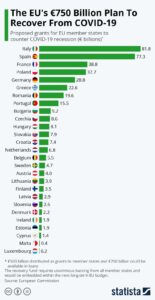
Nevertheless, the political objectives of the Euro Project mean that the ECB will continue to try to mask the fragility of its Member State economies by pressing on with further QE in a vain effort to cover individual government deficits. Particularly given the recent demand by President Macron of France and Prime Minister Draghi of Italy that Brussels loosen its spending rules whilst France and Italy break EU rules on debt to GDP, deficit levels. Further echoed by Greece, who wants EU debt rules relaxed. This presents the ECB with a double whammy down the line – press on with money printing, increasing inflation, or taper and increase interest rates to contain inflation, creating havoc with indebted Member States dependent on the ECB’s QE drip feed to their economies already lacking underlying productivity. The ECB cannot continue to serve two entirely separate, distinct, and divisive masters indefinitely – namely, the fiscal prudence demanded by the EU’s North, versus the fiscal looseness, or flexibility – demanded by the EU’s South.
Much continues to be made of the potential demise of the US Dollar. Despite the more obvious fall guy – namely the Euro – with the ECB’s current QE program equivalent to 80%+ of total EU GDP. Far in excess of the Bank of England at 41%, or the Federal Reserve at 38%, and heading towards the unenviable 130%+ level of the Bank of Japan. Indeed, it is worth noting that much of the noise surrounding the supposed demise of the US Dollar is from US and Gold, Silver quarters. Which does not reflect the huge strides made by the US Dollar in recent decades as the only true global currency with reserve currency, forex and commodities-backing status – not to mention geo-political, extra-territorial sanctions clout where US Dollar exclusion for non-US financial institutions is a clear and present danger. The Euro possesses none of these qualities yet is strangely overlooked as the most obvious major currency collapse candidate of the two. Indeed, it is not remotely unreasonable to suggest that the Euro as a currency may struggle to see out the 2020s intact. In many ways the currency markets have already made up their mind. With the Bank of Japan’s deflationary, decades-long policy a harsh reminder of the dangers of expanding the monetary supply on a low interest rate basis ad infinitum. True productivity, as ever, is the key ingredient and way forward. The UK – freed from the burden of EU tariffs and obligations – should continue to see exponential, productive growth globally – and be a major beneficiary. But it must prioritise productivity and go global at all costs. The inflexible, non-pragmatic Eurozone will, inevitably, be left behind.
As yet, based on the current inflation calculation methodology adopted by the major central banks, inflation has yet to correlate fully to the massive expansion of money supply. Yet the indicators are certainly there. In Germany, for example, producer price inflation was 19.2% in November 2021, and this will inevitably feed into consumer inflation before long. The former methodology used to calculate inflation is producing some extraordinarily worrying data – pre-1980 methodology shows current consumer inflation levels – when many inflation inputs (long since omitted from official figures) are factored in – running at clear double digit levels, with official figures running at a mere 5% or so. This can only mean one thing – rampant inflation coupled by major interest rate rises is all but inevitable. With poorer quality collateral used to prop up funding by the European Central Bank than even in the US, defaults across the major systemically affected EU banks are inevitable, as their exposure to the unfunded money printing machine that is the ECB is so high, and the entire system has been accustomed to near-zero level interest rates for a sustained period.
Any necessity to quell very evident raging inflation by even slight interest rate hikes will cause disproportionate damage to debt held at prevailing, low rates. Here, the quality of collateral for debt, as ever, will come to the forefront. It is certainly the case that the ECB is prepared to accept poorer quality collateral than the US as a basis for QE – the wider ramifications of a major default moment or currency crisis across the entire Eurozone would be profoundly felt across all 27 EU Member States. So a hike in interest rates – as the ECB is only too well aware – could have a major knock-on effect for more vulnerable EU Member State economies of the South reliant on the constant QE drip feed from the ECB. Whether or not this would provoke a Eurozone exit from a disgruntled North remains to be seen. Of course, the US and other major nations would not be unaffected – having become used to low interest rates for such an extended period of time. US low grade junk bond debt, for example, remains at elevated levels and would be disproportionately adversely hit by any interest rate hike by the Federal Reserve. The more acute inflation levels we are already seeing on a producer price basis and based on a more candid appraisal, 1980 methodology,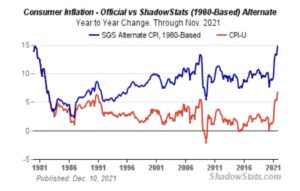
Geo-politics, and the wider geo-financial risk element that is so evident in the post-9/11 US sanctions era, are ever-present as we observe the global tussle between the US and its allies, NATO – and the combined might of China, Russia and their acolytes. From South Sea China military build-up to Ukraine, Afghanistan, Iran and its proxies – Vienna Talks and hopes of JCPOA revival, Russian Gazprom’s Nord Stream 2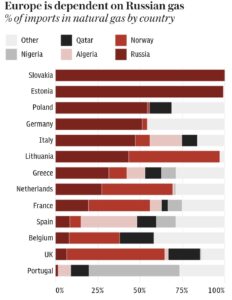
Coupled with these issues – particularly the pressing concern that central banks may be prevaricating 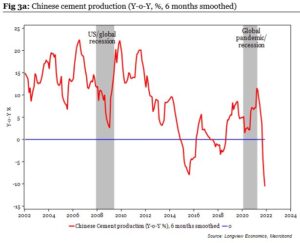
President Biden’s foreign policy errors – the hasty, premature withdrawal from Afghanistan an unwanted example – likely merely to empower the likes of Presidents Putin, Xi – and, on recent evidence, Iran – to provoke the US into submission. After President Trump’s more strident, ex-diplomatic foreign policy approach, there is no doubt that such major non-democratic global nations regard President Biden as a soft touch by comparison. That said, US sanctions policy – at least in terms of volume of designations, if not robust policy action per se – would indicate that President Biden may be far more strident that assumed. Indeed, his strident take on human rights abuses – as defined by the US – would indicate that Russia, China, Iran are entirely susceptible to sanction and censure.
Crypto has been the focus of much recent attention, and has swelled to a multi-trillion dollar market. Inevitably, and one would do well to caution this type of approach, the usual investment parameters and prevailing assumption criteria continue to dog this somewhat unique investment instrument. It is very evident that the very origination or inception of the likes of Bitcoin came about in the throes of the Global Financial Crisis (GFC) for very good reasons. So – whilst understandable, the use of existing parameters or valuation techniques for predictive or retrospective purposes must be conducted with great care. As a specific attempt to delineate itself from existing fiat, market parameters, crypto and the Metaverse must be treated very differently from other financial or investment instruments.
Treating them as mere alternatives to existing commodity or currency, stock investments is a very dangerous game indeed – likewise the chartist preference for reading trends in retrospective-to-forward-basis fashion. Naturally, crypto is becoming more mainstream and companies, countries, institutions are starting to adopt it. Exogenous risk is now a relevant factor for crypto and crypto mining in general – as by definition overall economic prosperity, infrastructure (or apparent liquidity via government COVID, QE, low interest leverage/credit) is key to any investment. That said, we may see continued attempts to revamp environmentally-friendly energy projects used to support crypto mining in jurisdictions in need of an economic boost – as low electricity prices are key to profitability for crypto miners, and environmentally-friendly energy often on the receiving end of government subsidies. Certainly, it is well worth noting the 5-year performance of “Innovation” investments – which now include crypto, ARK’s ARKK, S&P500 – which carries so many top global Big Tech names, Tesla. Versus the lacklustre performance of gold, silver, top European stocks under Germany’s DAX – the “non-Innovation” component.
What is so interesting about the march forward of established investments in the likes of Bitcoin, Ethereum and further NFT, Metaverse positions is the motivation for doing so. This behavioural aspect is perhaps key to identifying why this area has been so misunderstood to date. Simply put, the prevailing expertise behind market observance is not geared up to handle the level of active investor (often Retail) engagement sometimes witnessed in these newer markets. For sure, institutional engagement is critical and on the rise, but the social media spread of information, the global market access to investments on a very lightly regulated basis – and the 24/7, cross-border nature of crypto trading makes for a highly volatile, reactive and sensitive market environment. Which cannot be easily extrapolated into a bunch of chartist generalisations, candlestick-type indicators, and the like.
The true role of crypto as the ultimate recession hedge to prevailing status quo of financial markets, market observance assumptions has been widely tested since, for example, the inception of Bitcoin in the aftermath of the GFC. We should expect to learn a good deal more 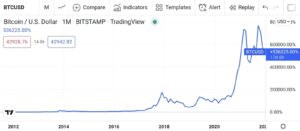
As Mark Twain was famously quoted as saying: “…Reports of my death have been greatly exaggerated…” It seems highly likely that the same will be true of the US Dollar and Crypto – although the latter for sure – as with all investment types – will have its winners and losers. Whether the same can be said of the Euro and the Eurozone is a different matter. If the ECB continues on its current course of having to serve two masters – North and South – eventual rupture in continued challenging COVID economic conditions – is inevitable. Ironically, the timing of the far from enlightening Brexit moment could not have been worse for Brussels – as losing touch with London as a key global European financial centre at this juncture nothing short of calamitous.
The UK’s GDP has grown to $3.2TRN (source: worlddebtclock.org) with the same source putting France – its most relevant comparator – at 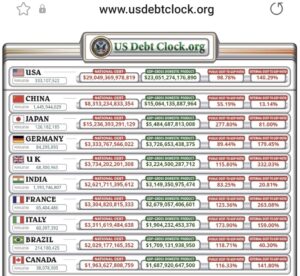
It is now the great irony that after another sustained period of low interest rates – now coupled with extensive money printing QE on the part of the Federal Reserve and the ECB – that with US junk bond levels highly elevated in the US after a record $500BN sold in 2021 – we are back, post-GFC – to square one. Any uptick in interest rates from the Fed – now inevitable – will lead to major repercussions in the US junk bond market, defaults and failures being commonplace. President Biden’s frantic efforts to up public spending in the US are not going to help. Naturally, China is hardly in a strong position with a failing property market, brakes put on its productivity by President Xi. Nor is the Eurozone – artificially keeping interest rates at unsustainably low levels to placate the heavily indebted EU South dependent on the drip feed of ECB inflationary QE. In terms of 